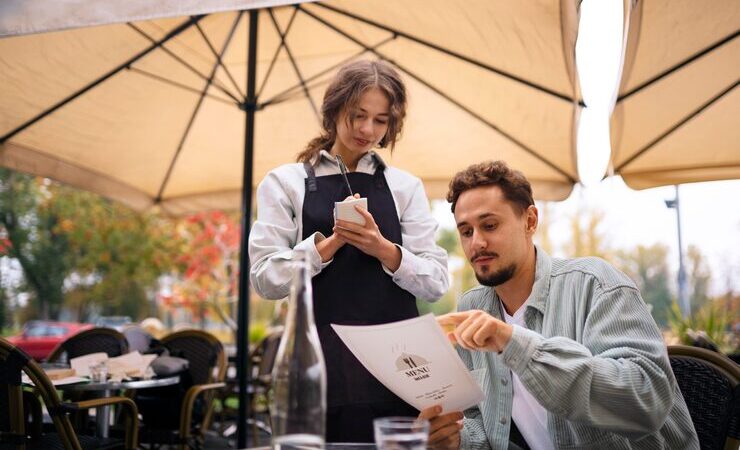Introduction
The success of a restaurant depends on many key things. One of the most important factors is its location. A restaurant can have the best food and the most skilled staff. Yet if the location is wrong, it may fail to attract clients. That is why the location of a restaurant is a major factor for all restaurant owners. The right location can bring many clients every day. It also affects your brand and the image people have of your business.
A good location helps a restaurant grow fast and gain loyal customers. Many owners focus on menus and decor but overlook location, a choice that impacts the whole business. Understanding location can save money, increase sales, and improve long term growth. In this article, we will explore why location matters and how it can change restaurant success.

Foot Traffic Boosts Sales
A busy location can bring more clients than a quiet one. People see your restaurant and decide to step in. Streets with high foot traffic increase the chance of new clients daily. Even a small café can earn more when many people pass by. Poor foot traffic can make even the best restaurants struggle. Outdoor seating near sidewalks or plazas can attract more attention. More foot traffic can turn a small spot into a local hotspot.
Owners who choose busy areas often see faster growth and higher brand awareness. Restaurant location importance is most visible when comparing quiet areas to busy streets. High foot traffic ensures that clients find your restaurant naturally without heavy advertising. Even walk-in customers can make a big difference in revenue.
Easy Access for Customers
Clients prefer restaurants that are easy to reach. They want to park, walk, or use public transport without stress. Hard-to-reach locations may lose many potential clients. Easy access saves time and gives a positive first impression. Restaurant location importance is evident when clients return regularly. Families and groups are more likely to visit if parking is simple. Side streets without parking reduce visits and repeat business.
Locations near public transport or main roads attract more clients. Accessibility boosts staff ease and punctuality. Easy-to-reach spots drive repeat visits and strong customer loyalty, as guests often prefer convenience.
Nearby Competitors Matte
The area around your restaurant can help or hurt your business. Too many rivals nearby can reduce client numbers. Some competitors can increase foot traffic by attracting diners to the area. People may visit one restaurant and notice yours nearby. A balanced mix of nearby businesses can increase visits and revenue. Studying competitors is part of restaurant location. Analyze what types of food are popular and what is missing.
Look for gaps where your menu can stand out. Competitors can also teach you what works in the market. The right location balances competition and opportunity for growth. Choosing the correct area can increase visibility and help your restaurant build a loyal client base.
Visibility and Signage
Your restaurant must be easy to see from the streets and walking paths. Clear signs attract attention and bring more clients. Hidden spots make people pass by without noticing your business. Visibility increases brand awareness and interest from potential clients. Restaurant location importance is obvious when your place is easy to find. Bright signs and proper lighting make your spot inviting.
Large windows or outdoor seating increase visibility even further. People often choose restaurants they can see and recognize quickly. Visibility helps new clients discover your food and encourages repeat visits. Even the best restaurant can fail if it is hidden from view. Owners should plan signage and entrances carefully to maximize attention.
Safety and Neighborhood
The area you choose must feel safe for clients and staff. Families and solo diners prefer clean, secure neighborhoods. Neighborhood vibe affects who visits and how often. Safe areas build loyal visitors over time. Restaurant location importance increases when clients feel comfortable and trusted. Well-lit streets and clean surroundings help clients feel at ease. Staff also work better in safe areas.
Safe locations encourage longer visits and more spending. Poor neighborhoods may reduce rent, but can lower client trust. A good location ensures that guests feel welcome and secure. Safe areas attract families, students, and regular diners. Security and comfort increase customer satisfaction and loyalty.
Costs and Rent
The price of a location affects profit and growth potential. Prime spots cost more but bring higher sales. Cheap locations reduce start-up costs but may attract fewer clients. Balancing cost and revenue is part of restaurant location.
Owners must weigh long-term revenue against rent and overheads. A good spot can offset higher rent with strong foot traffic. Location is not just about visibility or access. It also affects sustainability and profitability over time. Smart owners study the area, foot flow, and rent before signing a lease.
Nearby Attractions and Events
Restaurants near offices, shops, or schools attract steady client traffic. Tourist areas can bring seasonal clients and boost short-term revenue. Local events increase visitor numbers temporarily. Parks or entertainment spots may attract families or groups. Noise and traffic patterns affect guest comfort. Street style and surrounding buildings affect ambiance. Matching your restaurant with the area’s audience increases visits.
Restaurant location importance grows when the area suits your target clients. Understanding nearby attractions helps owners plan promotions and menu options. Proximity to events can provide extra revenue without additional marketing. Locations with attractions often see higher lunch and dinner traffic.

Growth Potential
A good location allows expansion over time. More space or better visibility can increase clients. Areas with high growth may bring more foot traffic later. Restaurant location importance includes planning for future demand. Locations near new projects, roads, or buildings often grow in value. Owners can plan marketing, menu changes, or delivery options for growth. A strong location supports long-term revenue and brand development.
Poor locations may limit growth and reduce income potential. Choosing the right spot ensures your restaurant thrives for years. Expansion is easier in areas with more visible traffic and client demand.
Conclusion
Restaurant location importance cannot be ignored for long-term success. Foot traffic, access, visibility, safety, neighborhood, costs, attractions, and growth potential all affect outcomes. A good spot can turn a simple menu into a thriving brand. A poor location can make even excellent food fail. Owners must study zones carefully and pick the best spot. Location affects clients, staff, brand perception, and revenue.
Prime locations build trust, attract repeat clients, and increase profitability. Smart decisions about location are essential for sustainable growth. With the right location, a restaurant can grow fast and remain strong in any market. Understanding the value of location ensures success for every restaurant. Proper location planning is the foundation of every thriving restaurant. Owners who choose wisely can see long term growth and strong customer loyalty.
